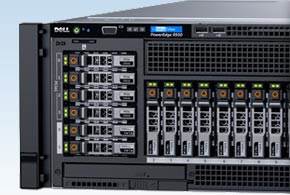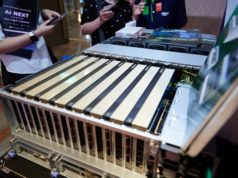Dell overtook HPE in server shipments, Gartner says, but HPE retained the top spot in revenues, according to both Gartner and IDC.
Dell Technologies in the second quarter overtook Hewlett Packard Enterprise in the number of servers shipped, though HPE held on to the top spot in terms of revenue for the three months, according to market numbers from analysts at Gartner and IDC.
The two vendors, which are undertaking significant restructuring programs as they look to better address a changing and more cloud-centric business world, continue to be the top competitors in a global server market that is seeing revenues declining slightly even as the number of shipments continues to grow.
According to the numbers released by Gartner Sept. 14, revenue fell 0.8 percent—to $13.5 billion—over the same period in 2015, while shipments, at more than 2.75 million units, increased 2 percent. IDC analysts found that revenue declined 0.4 percent year-over-year, to $13.4 billion, while shipments jumped 2.6 percent, to 2.4 million units.
According to IDC, server market grow has slowed due in part to what the analyst called a “pause in hyperscale data center expansion.” At the same time, the high end of the server market is continue to see a decline in sales, and strong the numbers a year ago from a server refresh cycle at enterprises makes for difficult comparisons, they said.
The server market numbers are rolling out pretty much as was expected, according to Kuba Stolarski, research director for computing platforms at IDC. While numbers for high-end servers continue to fall, “growth in volume servers is still healthy, which is a good sign for the market moving forward,” Stolarski said in a statement. “As we prepare for the second half of 2016, expect to see market growth led by cloud data center build-outs from key hyperscalers. Looking out further, the market will be impacted by digital transformation initiatives, including the internet of things and cognitive computing, and by a continuing shift towards software-defined infrastructure.”
Those are the changes in the industry that Dell, HPE and other vendors are reacting to, and that are roiling the market. Dell and HPE have gone in opposite directions as they position themselves in the larger enterprise IT space. Dell last week completed its $60 billion-plus acquisition of data storage giant EMC and its federated companies—including VMware, Virtustream, RSA and Pivotal—to create a massive $74 billion company that has increasing deep reach into a broad range of market segments.
The merging of the two companies has created the Dell EMC enterprise hardware unit, which will be based in EMC’s headquarters in Hopkinton, Mass., just outside of Boston.
Dell CEO Michael Dell—after the deal and throughout the 11 months between the time the deal was announced and it closed—stressed the need to become an end-to-end supplier of business technology, from the network edge and PCs through the data center and out to the cloud. In a statement after the Garnter numbers were released, Ashley Gorakhpurwalla, president of the server solutions division at Dell EMC, said the merger “will build on the powerful technology combination, a truly unique solutions portfolio and R&D investment in the platform that will support customers in their transformations into next-generation, software-defined data centers.”
Meanwhile, HPE CEO Meg Whitman continued to pare down the company, saying that such a fast-changing industry called for a smaller, more nimble tech vendor. The same day that Dell closed on the EMC deal, Whitman announced that HPE was spinning out its enterprise software business and merging it with Micro Focus in an $8.8 billion deal to create a company in which HPE will have a 50.1 percent stake. The move came just months after HPE spun out its services unit and merged it with Computer Sciences Corp. (CSC).
In noting Dell taking over the top spot in shipments, Jeffrey Hewitt, research vice president at Gartner, said the vendor benefited from programs it is running in the Asia/Pacific region, particularly in China.
Filling out the top positions in the global server market for revenue were IBM in third, followed by Lenovo and Cisco Systems (IDC had Lenovo and Cisco in a statistical tie for fourth). IDC also noted that original design manufactures (ODMs), which make white-box systems, as a group saw revenue grow 13 percent year-over-year, to more than $1.06 billion, which was more than either Lenovo or Cisco.
According to both Gartner and IDC, HPE, IBM and Cisco all saw declines in revenue. IBM’s decline was steepest, which wasn’t surprising since it sold its x86 server business to Lenovo in 2014. Dell saw the strongest growth.
On the shipments side, Gartner analysts said that after HPE came three Chinese vendors—Lenovo, Huawei Technologies and Inspur. Of that group, only HPE saw shipments decline.







